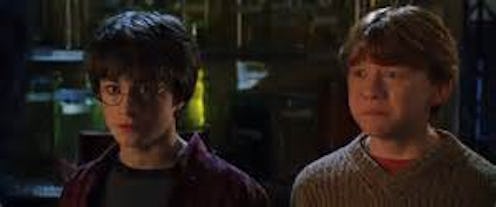Books
How Do Wizard Genetics Work? Science Can Explain

No matter how many times my biology professor tried to explain to me how brown-eyed parents can have a blue-eyed child, I've never understood the science behind genetics — until now. One magic-loving professor from Duke University used biology to explain how wizard genetics work in the Harry Potter series — and now it all makes so much sense. You'll never have to spend another day puzzling over why Filch can't do magic, or why Hermione can — because it's all explained using simple science.
At the science-meets-sci-fi convention Future Con, professor Eric Spana held a panel on “Harry Potter and the Genetics of Wizarding,” where he laid out exactly how wizarding DNA works. Do you remember your high school biology teacher teaching you about dominant and recessive alleles? Yeah, that's going to come in handy here.
Spana used Hagrid as an example to prove that magic must be a dominant trait, not a recessive one. That's because Hagrid's only got one wizard parent — and one non-magical giant parent — and yet he can still do magic himself. Hagrid's father's magical genes overpowered his mother's non-magical ones — leaving Hagrid able to do magic. This also explains half-blood Hogwarts students, who have inherited magical abilities from just one of their parents.
OK, but then how did Hermione Granger get her powers when she was born to Muggle parents? Spana's got an answer for that, too. Hermione is a good example of a "de novo" mutation; in other words, her magical powers were caused by a random mutation that had never happened in her family before. Random mutations have never sounded so glamorous!
Finally, Spana explained how poor Argus Filch ended up unable to use any magic powers despite his magical heritage. In this case, one of his parents might have carried what Spana named the SQUIB mutation, which could cancel out the magical gene. Poor Filch.